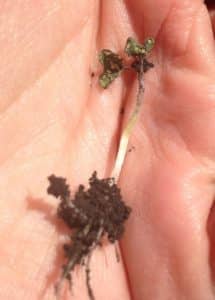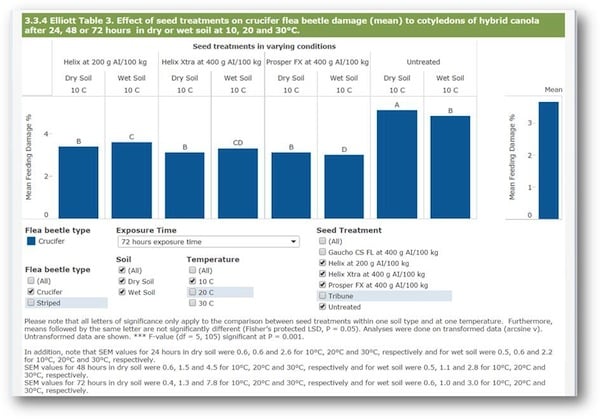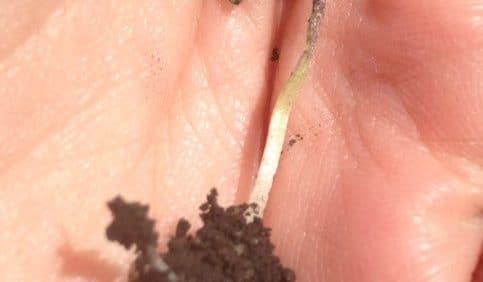
Flea beetles
Flea beetle thresholds don’t change with frost, but frost may have changed the crop assessment situation. Here’s how:
—Cotyledons that will die due to frost damage should not be a factor in the decision, even if they had flea beetle damage before the frost. Instead, check that the growing points on these seedlings have survived. If yes, watch for damage on first leaves. Because these leaves are so small, it may not take much time for flea beetles to reach the action threshold of 25% leaf area loss.
—With leaf area lost to frost, flea beetles may start to feed on stems. Thresholds are not established for stem feeding. For instance, it is unknown how many bites to a seedling stem will kill the plant. The general consideration is that if stems are being eaten and more than one plant per square foot is likely to die as a result, spraying may be required. The risk could be higher in hot, dry weather where plants need to move more moisture up the stem and where plant stress will be higher. Notes: Seed treatments tend to be more effective in dry conditions. (See the graph below.) And flea beetles will need to eat some of the plant to ingest the seed treatment, which is the case for stems as well as for leaves.
—As temperatures warm up, flea beetles could become very active. So the combination of small plants and active flea beetles mean thresholds could be reached very quickly.
—So while thresholds don’t change, scouting should improve. That may mean checking the most vulnerable crops daily for the first little while at least.
—Slow emergence or delayed growth due to frost will reduce the amount of time left for seed treatments to protect the crop.

At the Hub, you can also check out the conclusions to Dr. Julie Soroka’s flea beetle risk mitigation study.
Diamondback moth
Adults are arriving, and south winds this week may bring more of them. Counts are still fairly low. Early season trap counts can provide an early hint that worms may be worth watching for later in the season, but they are not science-based thresholds. Beneficial insects often reduce the diamondback moth threat, even if we see large numbers of adults early in the season.
Cutworm
Alberta is asking growers and agronomists who spot cutworms to report with sighting and species to its online survey. Here is the submission form. Survey results are mapped here.
Help for insect scouting
Prairie Pest Monitoring Network has an insect scouting chart with links to more information on all major insects in canola. You can also subscribe to the Prairie Pest Monitoring Network blog for regular updates through the season. Type your e-mail address in the upper right corner of the Blog’s Home Page then click submit.

